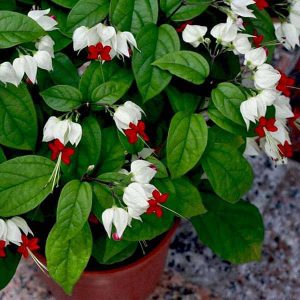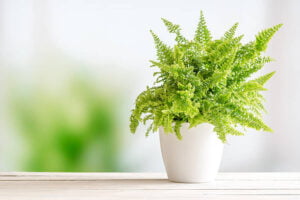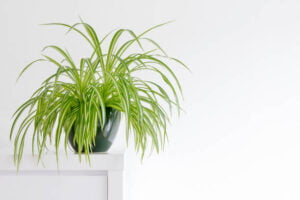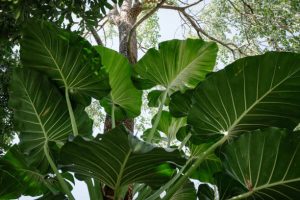Helpful Guides on each Category

If you’re looking for the best perennials for shade, then you’re in for a treat!
Perennials are plants that come back year after year, making them a popular choice for gardeners.
These beautiful and easy-to-maintain plants are perfect for those who want long-lasting blooms year after year, without having to replant every season. And the best part? There are plenty of perennials that love the shade!
Shade-tolerant plants may not get as much attention as their sun-loving counterparts, but they have their unique charm.
With delicate blooms and lush greenery, these perennials can add texture and colour to your shady spots. So, why settle for a dull shady area when you can create a stunning shade garden with the best perennials for shade?
In this article, we’ll introduce you to some of the most beautiful and resilient perennials that can thrive in the shade. Whether you’re an experienced gardener or a newbie looking to add some greenery to your outdoor space, we’ve got you covered! Get ready to discover the best perennials for shade and transform your garden into a beautiful and peaceful oasis.
In this blog post, we will explore the best perennials for shade. These go well for Low shade, Total shade, Garage-like, indoor shade and any other kind of shade you have planting space for.
best perennials for Low Shade
Low shade is defined as an area that receives two to three hours of direct sunlight per day.
1. Hosta. Scientific name: Hosta spp.

The hosta is a popular shade-loving perennial that is loved for its lush foliage and unique texture. It’s a hardy plant that can tolerate a wide range of soil conditions and is relatively low-maintenance.
Hostas come in a variety of sizes and colours, from small and compact to large and sprawling, and from green to blue to variegated.
In addition to their aesthetic appeal, hostas also have practical uses in the garden. Their dense foliage can be used as a ground cover to help prevent soil erosion, and they can also be planted around the base of trees to add interest to an otherwise bare area.
Plus, their thick leaves are often deer-resistant, making them a great choice for gardens in areas with high deer populations.
2. Astilbe. Scientific name: Astilbe spp.
Astilbe is a popular perennial plant that thrives in shady areas. It’s known for its feathery, plume-like flowers that bloom in shades of pink, white, red, and purple during the summer months. Astilbe’s foliage is also noteworthy, with fern-like leaves that add texture and depth to any garden.
Astilbe prefers rich, moist soil and partial shade, making it a great choice for planting under trees or in other areas where sunlight is limited. It’s also relatively low-maintenance, requiring only regular watering and occasional fertilization.
In addition to its aesthetic appeal, astilbe has practical uses in the garden. Its tall, upright growth habit makes it a great choice for creating vertical interest, and its dense foliage can be used as a ground cover to help prevent soil erosion.
Overall, astilbe is a versatile and beautiful perennial plant that can add both colour and texture to any shady garden.
3. Bleeding Heart. Scientific name: Lamprocapnos spectabilis (formerly Dicentra spectabilis).

Bleeding heart is a classic shade-loving perennial that is loved for its delicate, heart-shaped flowers that bloom in spring. The flowers come in shades of pink, white, and red, and are suspended from arching stems that rise above the plant’s attractive, fern-like foliage.
Bleeding heart prefers moist, well-drained soil and partial to full shade, making it a great choice for planting in woodland gardens or other shady areas. It’s also relatively low-maintenance, requiring only regular watering and occasional fertilization.
In addition to its aesthetic appeal, bleeding heart has practical uses in the garden. Its arching stems and delicate flowers make it a great choice for creating soft, romantic borders or adding interest to rock gardens.
4. Foamflower. Scientific name: Tiarella spp.
Foamflower is a shade-loving perennial plant that is prized for its delicate, frothy flowers and attractive, textured foliage. The flowers bloom in spring and summer and come in shades of pink, white, and red. The foliage is typically heart-shaped and often has a slightly fuzzy or hairy texture.
Foamflower prefers moist, well-drained soil and partial to full shade, making it a great choice for woodland gardens or other shady areas. It’s also relatively low-maintenance, requiring only regular watering and occasional fertilization.
In addition to its aesthetic appeal, foamflower has practical uses in the garden. Its creeping growth habit and attractive foliage make it a great choice for ground cover, and it can also be used to add interest to rock gardens or mixed borders.
5. Coral Bells. Scientific name: Heuchera spp
Coral Bells, also known as Heuchera, is a popular shade-loving perennial that is prized for its attractive foliage and delicate flowers. The leaves come in a wide range of colours, from green to burgundy to silver, and often have striking variegation or veining. The flowers, which bloom in spring and summer, are typically small and bell-shaped, and come in shades of pink, red, and white.
Coral Bells prefers well-drained soil and partial to full shade, making it a great choice for woodland gardens or other shady areas. It’s also relatively low-maintenance, requiring only regular watering and occasional fertilization.
In addition to its aesthetic appeal, Coral Bells has practical uses in the garden. Its compact growth habit and attractive foliage make it a great choice for edging or border planting, and it can also be used to add interest to mixed container gardens.
best perennials for Total Shade
Total shade is defined as an area that receives less than two hours of direct sunlight per day.
6. Ferns

Ferns are a classic shade plant that comes in a variety of shapes and sizes. They prefer moist soil and can grow up to three feet tall. Some popular varieties include Maidenhair Fern (scientific name: Adiantum spp.) and Japanese Painted Fern (scientific name: Athyrium niponicum var. pictum).
7. Lungwort. Scientific name: Pulmonaria spp.
Lungwort is a shade-loving plant with spotted leaves and delicate flowers that come in shades of pink, blue, and purple. They prefer moist soil and can grow up to one foot tall.
8. Jack-in-the-Pulpit. Scientific name: Arisaema triphyllum.
Jack-in-the-Pulpit is a unique shade plant with a hooded flower that resembles a preacher in a pulpit. They prefer moist soil and can grow up to two feet tall.
9. Solomon’s Seal. Scientific name: Polygonatum spp.
Solomon’s Seal is a shade-loving plant with arching stems and delicate, bell-shaped flowers. They prefer moist soil and can grow up to three feet tall.
10. Toad Lily. Scientific name: Tricyrtis spp.
Toad Lily is a shade-loving plant with speckled leaves and delicate, orchid-like flowers. They prefer moist soil and can grow up to two feet tall.
11. Hellebore. Scientific name: Helleborus.
Hellebore is a shade-loving plant with evergreen leaves and cup-shaped flowers that come in shades of pink, purple, and green. They prefer moist soil and can grow up to two feet tall.
Best Perennials to Grow Indoors For shade
12. Snake plant (Sansevieria trifasciata)
This hardy plant is known for its long, upright leaves that come in a variety of colours and patterns. It’s also very low-maintenance and can survive in low-light conditions.
13. Peace lily (Spathiphyllum)
This elegant plant features dark green leaves and delicate white flowers that bloom throughout the year. It can tolerate low light but will do best with some indirect sunlight.
14. Pothos (Epipremnum aureum)
This fast-growing plant has trailing vines with heart-shaped leaves that come in a range of colours, from green to variegated. It can thrive in low light but will benefit from some bright, indirect sunlight.
15. ZZ plant (Zamioculcas zamiifolia)
This striking plant has glossy, dark green leaves that are very easy to care for. It can tolerate a wide range of light conditions, including low light.
16. Spider plant (Chlorophytum comosum)

This classic plant has long, narrow leaves that arch gracefully and produce small, spider-like plantlets. It can tolerate low light but will do best with some bright, indirect sunlight.
17. Chinese evergreen (Aglaonema)
This plant has variegated leaves that come in a range of colours and patterns, from green and silver to pink and red. It can tolerate low light conditions and doesn’t need much water.
18. Heartleaf philodendron (Philodendron scandens)
This trailing plant has heart-shaped leaves that can add a pop of green to any room. It can tolerate low light and infrequent watering.
19. Cast iron plant (Aspidistra elatior)
This tough plant has dark green, leathery leaves that can withstand neglect and low light conditions. It’s perfect for beginners or those who tend to forget to water their plants.
20. Fittonia (Fittonia verschaffeltii)
This small plant has brightly coloured leaves with intricate patterns of pink, red, white, or green. It needs a humid environment and can tolerate low light, but it may need some indirect sunlight to maintain its vibrant colours.
Conclusion: best perennials for shade
And that’s a wrap, folks! We’ve covered 15+ of the best perennials for shade.
We hope you’ve enjoyed this journey through the shady world of gardening. Whether you’re a seasoned gardener or a novice, we’re confident that you’ve found something here that will help you transform your garden into a lush and vibrant paradise.
Just don’t forget this; be sure to choose a pot with good drainage to prevent waterlogged soil. Also, make sure to check that the plant you choose is not toxic to pets or children if you have them in your home.
So, go forth and experiment with these best perennials for shade – mix and match, try new combinations. Don’t be afraid to get creative! With a little bit of patience, you’ll soon have a shade garden that’s the envy of all your neighbours.
And who knows, you might just become a master shade gardener, inspiring others to follow in your footsteps.
After all, the best perennials for shade deserve to be celebrated, and we’re glad to have been a part of that celebration. Happy gardening, folks!





